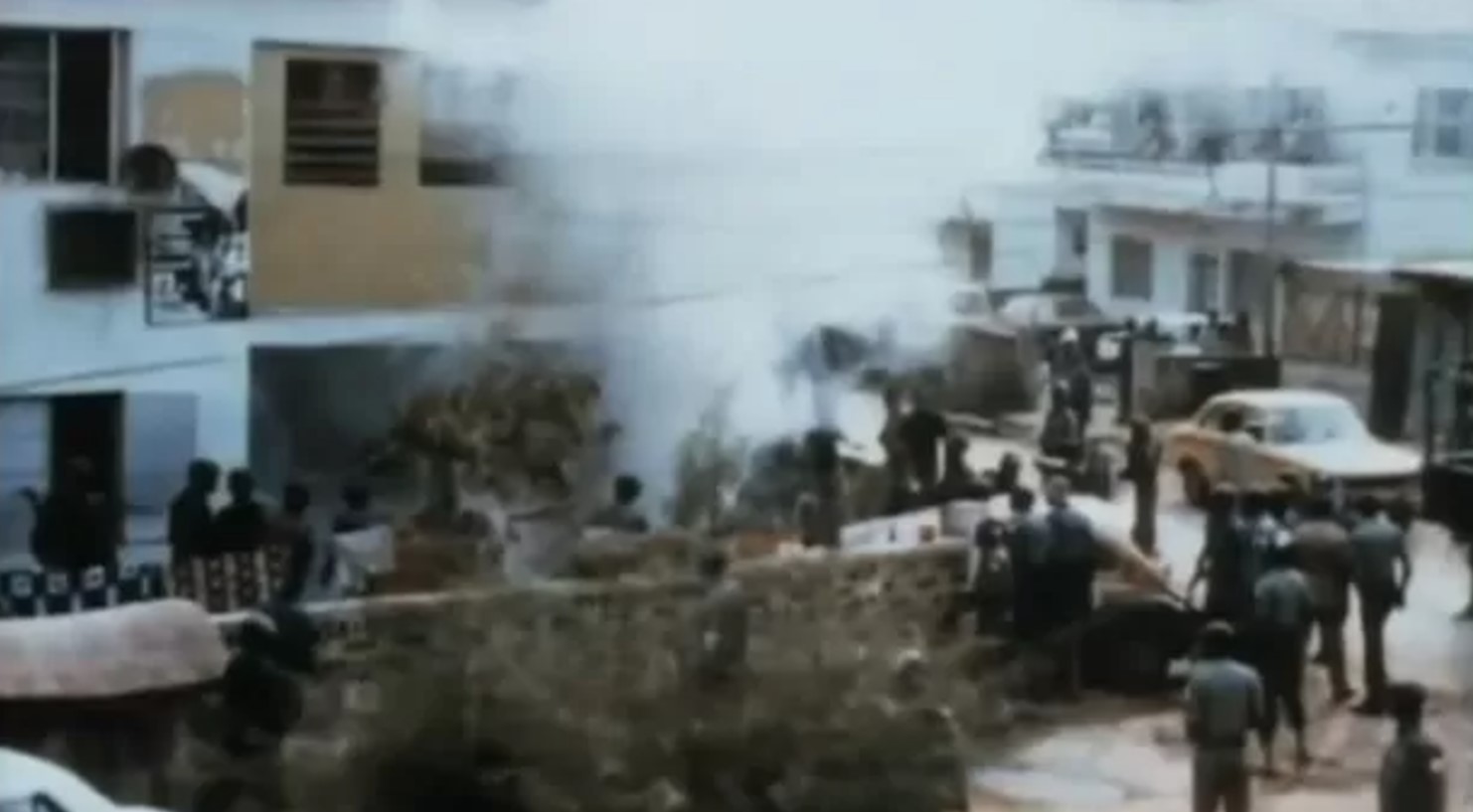Kalakuta Republic was the home of the late musician and political activist, Fela Anikulapo Kuti. The commune, located at No. 6 Agege Motor Rd., Moshalashi, Lagos, enclosed Fela’s recording studio, nightclub and a private clinic which was operated by his younger brother, Beko Ransome-Kuti. The two‐storey yellow building also housed Fela’s family and band members…Click Here To Continue Reading>> …Click Here To Continue Reading>>
The name ‘Kalakuta‘ was a parody of Calcutta prison in India where Fela served a sentence in 1974 for possessing marijuana which many believed was politically motivated. Fela declared Kalakuta an independent republic from Nigeria due to his hatred for the then military government which he believed ruled Nigerians with dishonesty. Having a republic inside a republic did not go down well with the military government.
Fela’s relationship with the military government deteriorated when he released a best-selling track titled ‘Zombie’ which mocked Nigerian soldiers. The song gained nationwide attention which angered the military government of Olusegun Obasanjo. A line of the song says, “Zombie no go walk unless you tell am to walk“, i.e., a zombie (fool) won’t walk unless commanded.

Their already strained relationship got severed on a fateful day when two of Fela’s boys got in a heated argument with a military police officer for driving one of Fela’s vehicle which had no plate number at the front; this was on the 18th of February, 1977. Fela’s boys, identified as Segun Adams and Segun Ademola, argued that since there was a plate number at the back, they would not let the officer impound the vehicle.
Fela’s boys drove away as the argument got intense. Some military men chased them to Kalakuta Republic but were denied entrance. This infuriated the military men and they set fire to the generator that powered Kalakuta Republic and cut its electric fence as well, then called for back up to fully invade the commune.

Shortly after, about one thousand soldiers arrived with machine guns. Stampede ensued in Kalakuta Republic as the soldiers mercilessly beat its occupants including Fela and his brother. Fela’s brother, Beko, claimed they were almost killed during the attack. Women were beaten and molested. READ FULL STORY HERE>>>CLICK HERE TO CONTINUE READING>>>
Fela’s mother, Mrs. Funmilayo Ransome-Kuti was beaten and thrown from an upstairs window. She eventually died from the injuries she sustained during the attack. The soldiers set fire to the commune which razed to ashes in no time.

Properties worth millions of Naira were destroyed; most of Kalakuta’s 60 occupants were in the hospital and so were a number of innocent bystanders who ran past the flames with their arms held straight in the air, a gesture of surrender, but were clubbed anyway by drunken, red-eyed soldiers. It was indeed a horrible day for Fela and his family. People believed that Fela’s beef with the military government culminated in the attack on Kalakuta Republic.

However, the Kutis did not let the military go away with their assault. They filed a N25 Million lawsuit against the Nigerian military. The Kutis’ lawyer, Mr Tunji Braithwaite, handled the case brilliantly but eventually lost to the military government on the ground that the soldiers who attacked Kalakuta Republic were unknown soldiers. Thus the case was dismissed!

An infuriated Fela who later lost his mother as a result of the attack carried a replica of her coffin to the Dodan military barracks and dropped it off. He later released a song titled ‘Coffin for Head of State’ in 1980 which narrated the attack on Kalakuta and the death of his mother.

The military government of Olusegun Obasanjo revoked the Kutis’ Certificate of Occupancy of the commune. The site of the demolished Kalakuta Republic is now occupied by a school, named after Fela’s original surname: Ransome-Kuti Memorial Grammar School.



















